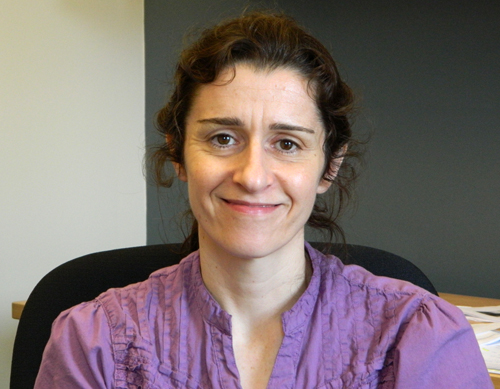
When she was eight years old, Nicole Nemeth asked her parents for a horse. Instead, they gave her a parrot. At the time, her parents were probably just trying to distract her from expensive equine pursuits with a pretty bird, but that gift may have changed Nemeth’s life. It certainly influenced her career decisions.
Today, Nemeth is a pathobiology professor with a deep interest in birds and wildlife. “Before I went to veterinary school, I traveled to Costa Rica and spent three years studying wild birds there,” she says. She loved seeing parrots flying free in the wild, but life for a Costa Rican parrot wasn’t all good. “People were poaching baby parrots out of their nests, and I found that heartbreaking.”
At the time, the quickest route to helping animals seemed to be veterinary school, but that was just the first step in Nemeth’s education. She earned her veterinary degree and a PhD at Colorado State University, working at the Centers for Disease Control and Prevention while in school. “This was when West Nile virus was on its westward spread across North America, and there was plenty of funding for research and work connected to that,” she says.
After doing some post-doctoral work with the U.S. Department of Agriculture research group, studying wildlife in her home state of Colorado, Nemeth decided to study pathology as her interest in that area kept growing. At the University of Georgia, wildlife was a major part of her pathology studies, and she was involved in several research projects.
“We looked at wildlife diseases across the southeastern areas of the U.S.,” she says. “That included skin diseases in deer, arthritis in raccoons and influenza viruses in passerine birds.” She was doing her pathology residency at the University of Georgia when she heard about the opportunity at the Ontario Veterinary College (OVC).
What attracted her to OVC was, among other things, the presence of the Canadian Cooperative Wildlife Health Centre’s Ontario branch, part of a federal program that tracks important and emerging diseases in wildlife. “I’m hoping to help with diagnostics or do some research-oriented work on emerging wildlife diseases,” Nemeth says.
Emerging diseases interest her because she enjoys the process of figuring out the answers to her questions. Now that West Nile virus has become endemic across much of North America, numerous questions regarding transmission and immunity among birds have been answered, but there is less available funding.
One issue she’s interested in is white-nose syndrome in bats. The “white nose” is caused by a fungus that was brought to North America from Europe, and can kill bats that hibernate over the winter. Once it gets into a cave sheltering a colony of bats, a very high percentage of the bats will be infected and die, Nemeth explains.
In addition to her research, Nemeth is part of the diagnostic pathology team for animals from the Toronto Zoo. She’s excited about adding that variety to her work, she says. “Zoo animals have a whole different set of problems compared to wild animals.” Perfect for someone who enjoys problem-solving and figuring out the source of animal health issues.
She’ll also be teaching about wildlife, zoo animals and exotic animals in both the DVM and D.V.Sc. programs.
Nemeth likes Guelph’s eco-friendliness, and is looking forward to riding her bike around the city; she’s also an avid swimmer. That little parrot she was given at age eight is still with her, even though that parrot is not at all fond of Nemeth’s husband. “He dive-bombs my husband’s head and attacks his feet,” she says. “He’s a one-person parrot.” The couple also has a second parrot who is a bit less territorial.
“I do like viruses and bird diseases a lot,” she says. Not “like” as in “enjoys” but “like” as in “wants to understand them.
“There are a lot of tragic things that happen to wildlife, and I want to do some good on their behalf. Shrinking habitats and pollution already cause so many problems for birds and other animals that I hope I can help in a small way by helping to figure out how to deal with some of the diseases that can affect them.”